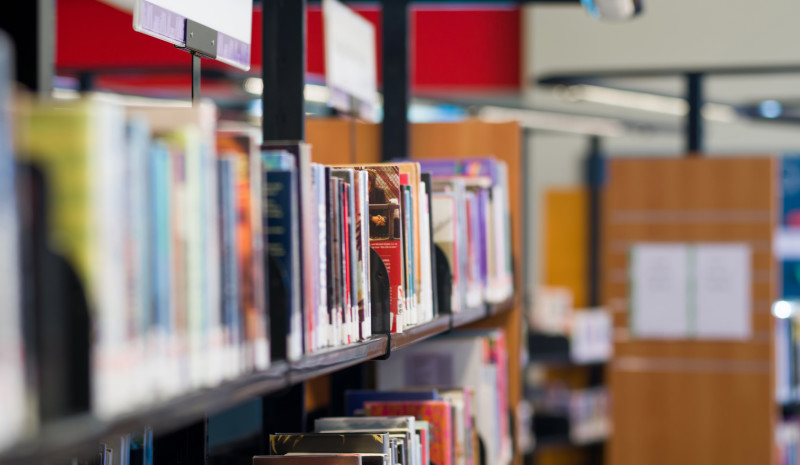 Some students at Beehive Elementary School in Kearns, Utah, come from families with a mother, a father and their biological children living together under one roof. Many will likely have a dog.
Some students at Beehive Elementary School in Kearns, Utah, come from families with a mother, a father and their biological children living together under one roof. Many will likely have a dog.
Others belong to families comprised of two Dads or two Moms, or one Mom who works and is single, or where both parents are unemployed and they do not have a roof because they are homeless.
“The majority of my students come from single parent households, or have been adopted by family members who are not their biological parents,” says Caren Burns, a teacher at Beehive. “Others have LGBTQ (lesbian, gay, bisexual, transgendered, questioning) parents, and some have parents who are incarcerated.”
As sweeping social changes redefine “family,” school librarians are frantically trying to stock shelves with progressive book collections to help serve diverse student populations. Stock characters of parents often featured in traditional literature are now viewed as in need of an overhaul.
“We need to find students books that will relate to their family situations and various backgrounds,” says Burns, a member of the Granite Education Association (GEA). “I think having a wider variety of family structures show up in the texts that our students are reading nationwide will increase literacy learning, help them work through tough family situations, and provide literature they can emotionally connect to.”
A report by the Pew Research Center identified recent trends in family structures being comprised of more:
• Unmarried couples raising children.
• Gay and lesbian couples raising children.
• Single women having children without a male partner to help raise them.
• People living together without getting married.
• Mothers of young children working outside the home.
• People of different races marrying each other.
“Children who belong to non-traditional families often experience bullying, social isolation in school, and cyber-aggression on social media and other forums,” says Dr. Valerie Maholmes, author of "Fostering Resilience and Well-Being in Children and Families in Poverty: Why Hope Still Matters." “Awareness of these data and other pertinent information may encourage librarians to develope book collections addressing this issue.”
Among the goals of school libraries is to draw attention to urgent student problems. Maholmes says recent research suggests that students from non-traditional families may have difficulty making friends, performing well in school, and may also have poor health outcomes.
“Education leaders and academics can provide workshops, make data available and accessible to librarians to help inform their book selection activities,” says Maholmes, Chief of the Pediatric Trauma and Critical Illness Branch at the Eunice Kennedy Shriver National Institute of Child Health and Human Development in Maryland. “Schools, families, education leaders will all have to work together to identify and endorse books of the highest quality and educational value.”
Collaboration between librarians, administrators, school district officials, parents, and state education boards is vital to the process of acquiring the latest print and e-books for school libraries.
“If we have opportunities to serve on a book selection panel, or work with our curriculum specialists, we might also have an impact,” says Caren Burns. “While it may vary from state to state and district to district, educators need to put ourselves in positions to communicate with the people who make book purchasing decisions so we can speak on behalf of students.”
Says Maholmes: “The collections should be developmentally appropriate and should include books from a variety of genres including classics, non-fiction, and contemporary short stories to name a few. This would allow children to see themselves and their particular family context in these books.”
Parents, community leaders, school administrators and members of the Minneapolis Federation of Teachers and Education Support Professionals Local 59 in Minnesota organized a recent campaign to end the use of an offensive phonics curriculum employed by the Minneapolis Public School District. The curriculum was filled with race, gender, and cultural stereotypes.
It is just as important to update book collections about non-traditional families as it is to purge library shelves of racist and sexist materials, according to teacher Lynn Nordgren, president of Local 59.
“It is critical that students see themselves represented in our schools to ensure they feel they belong – that their school sees them, believes in them, and acknowledges them,” she says. “How inspiring for a student to know we see them for who they are and take time to understand all of what makes them special and wonderful.”
While many school libraries may welcome a reality check on their book inventories, being a catalyst for social change can be a challenge to others.
“Our librarian does her best to find books about children living in diverse family situations,” Burns says. “But her budget is tight and we have a small group of parents who fight to get books with certain diverse family situations off of our district’s approved book list.”
Located in metropolitan Salt Lake City, Beehive’s approximately 700 preK – 6 students are predominantly White (43 percent) and Hispanic (43 percent) along with smaller numbers who are Black, Pacific Islander, Asian, and American Indian.
“If a child comes from a family that we would classify as diverse and they find a book in a library about their situation, they will be thrilled,” Burns says. “Finding texts on subject matter that will spark student interest and are relatable is vital, especially for struggling readers.”
Books with characters who act and look like them “sends a subconscious message to students that their families are accepted and valued,” she says.
Photo: Associated Press





